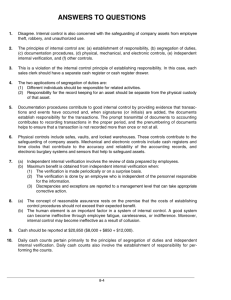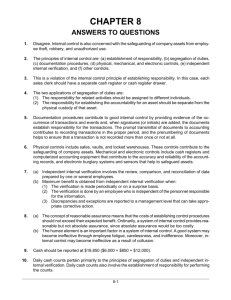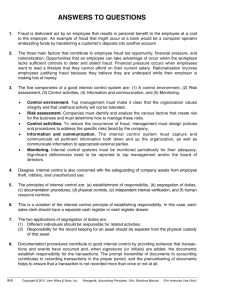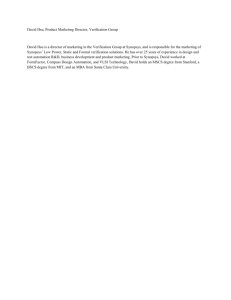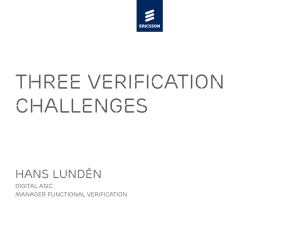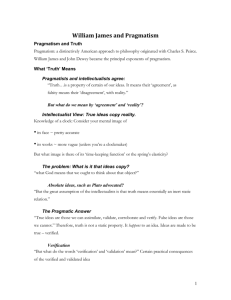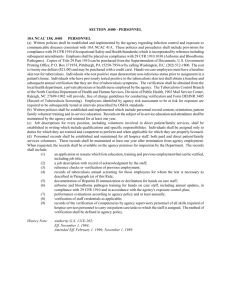Programming Languages and Verification Explained
advertisement
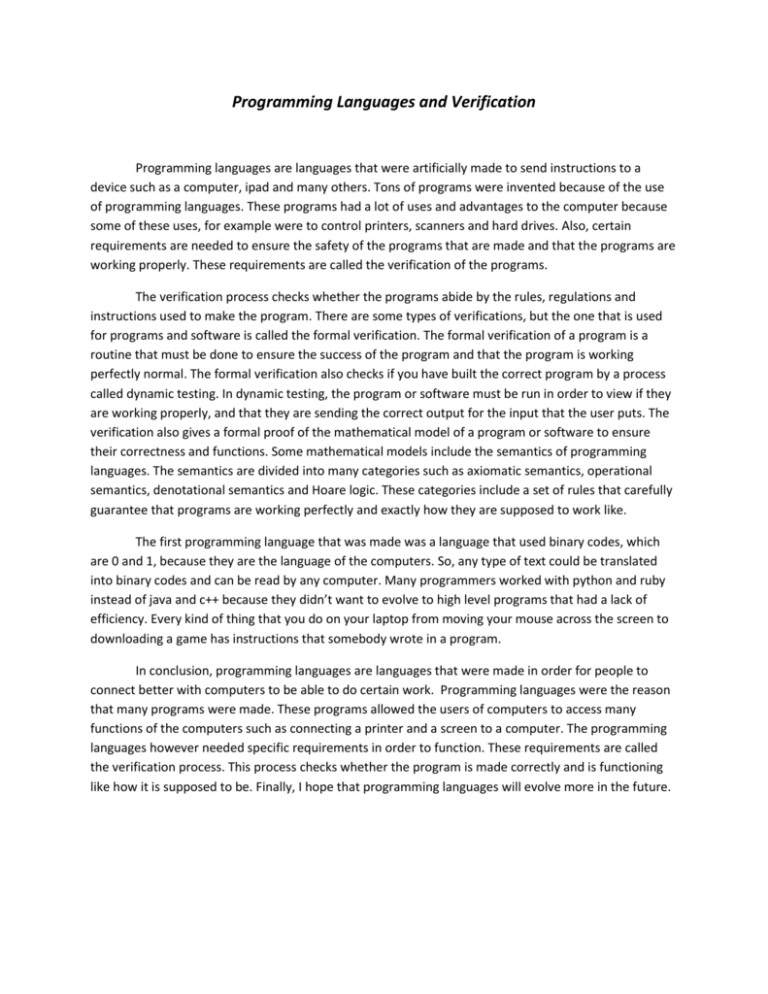
Programming Languages and Verification Programming languages are languages that were artificially made to send instructions to a device such as a computer, ipad and many others. Tons of programs were invented because of the use of programming languages. These programs had a lot of uses and advantages to the computer because some of these uses, for example were to control printers, scanners and hard drives. Also, certain requirements are needed to ensure the safety of the programs that are made and that the programs are working properly. These requirements are called the verification of the programs. The verification process checks whether the programs abide by the rules, regulations and instructions used to make the program. There are some types of verifications, but the one that is used for programs and software is called the formal verification. The formal verification of a program is a routine that must be done to ensure the success of the program and that the program is working perfectly normal. The formal verification also checks if you have built the correct program by a process called dynamic testing. In dynamic testing, the program or software must be run in order to view if they are working properly, and that they are sending the correct output for the input that the user puts. The verification also gives a formal proof of the mathematical model of a program or software to ensure their correctness and functions. Some mathematical models include the semantics of programming languages. The semantics are divided into many categories such as axiomatic semantics, operational semantics, denotational semantics and Hoare logic. These categories include a set of rules that carefully guarantee that programs are working perfectly and exactly how they are supposed to work like. The first programming language that was made was a language that used binary codes, which are 0 and 1, because they are the language of the computers. So, any type of text could be translated into binary codes and can be read by any computer. Many programmers worked with python and ruby instead of java and c++ because they didn’t want to evolve to high level programs that had a lack of efficiency. Every kind of thing that you do on your laptop from moving your mouse across the screen to downloading a game has instructions that somebody wrote in a program. In conclusion, programming languages are languages that were made in order for people to connect better with computers to be able to do certain work. Programming languages were the reason that many programs were made. These programs allowed the users of computers to access many functions of the computers such as connecting a printer and a screen to a computer. The programming languages however needed specific requirements in order to function. These requirements are called the verification process. This process checks whether the program is made correctly and is functioning like how it is supposed to be. Finally, I hope that programming languages will evolve more in the future.


